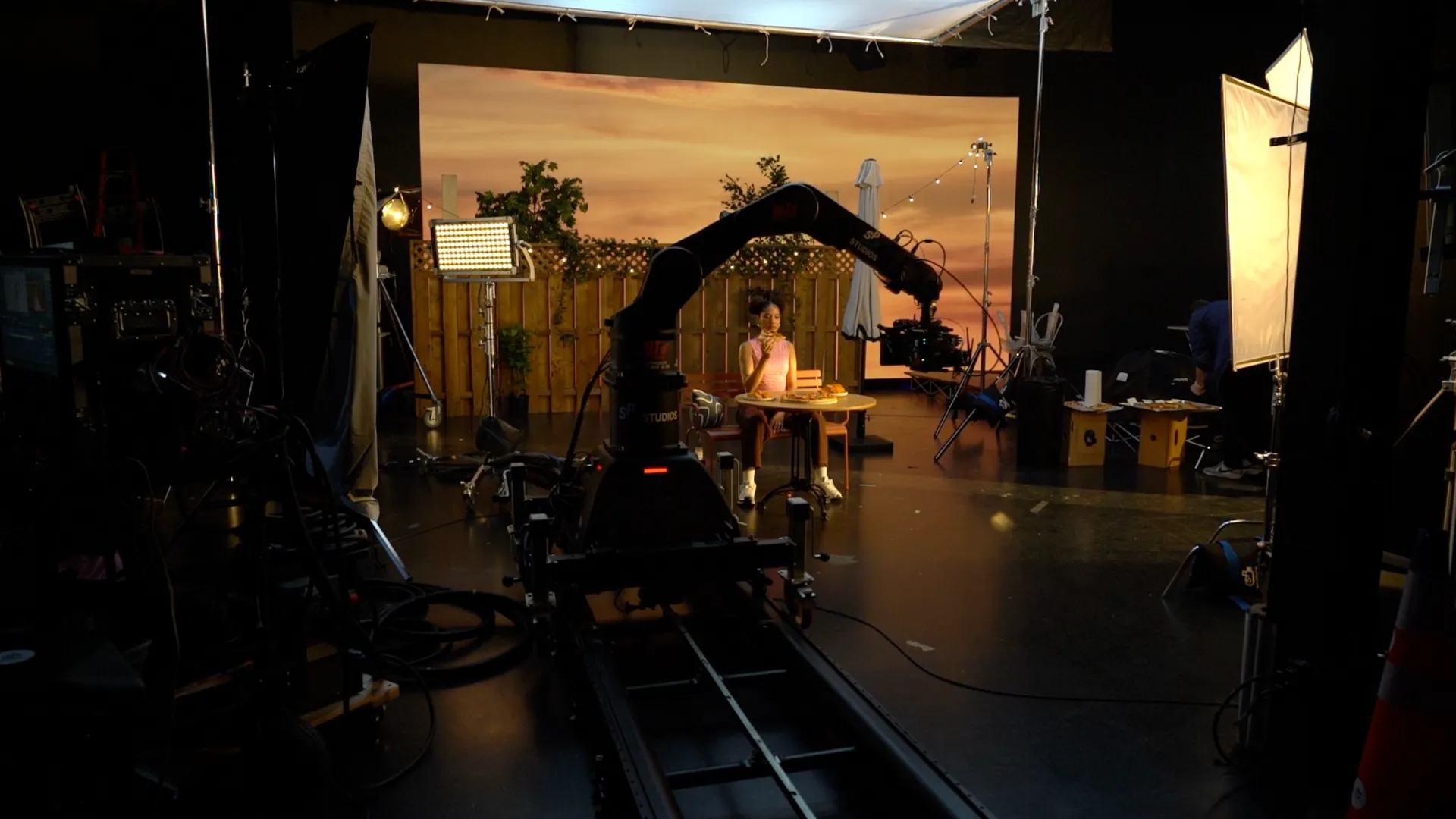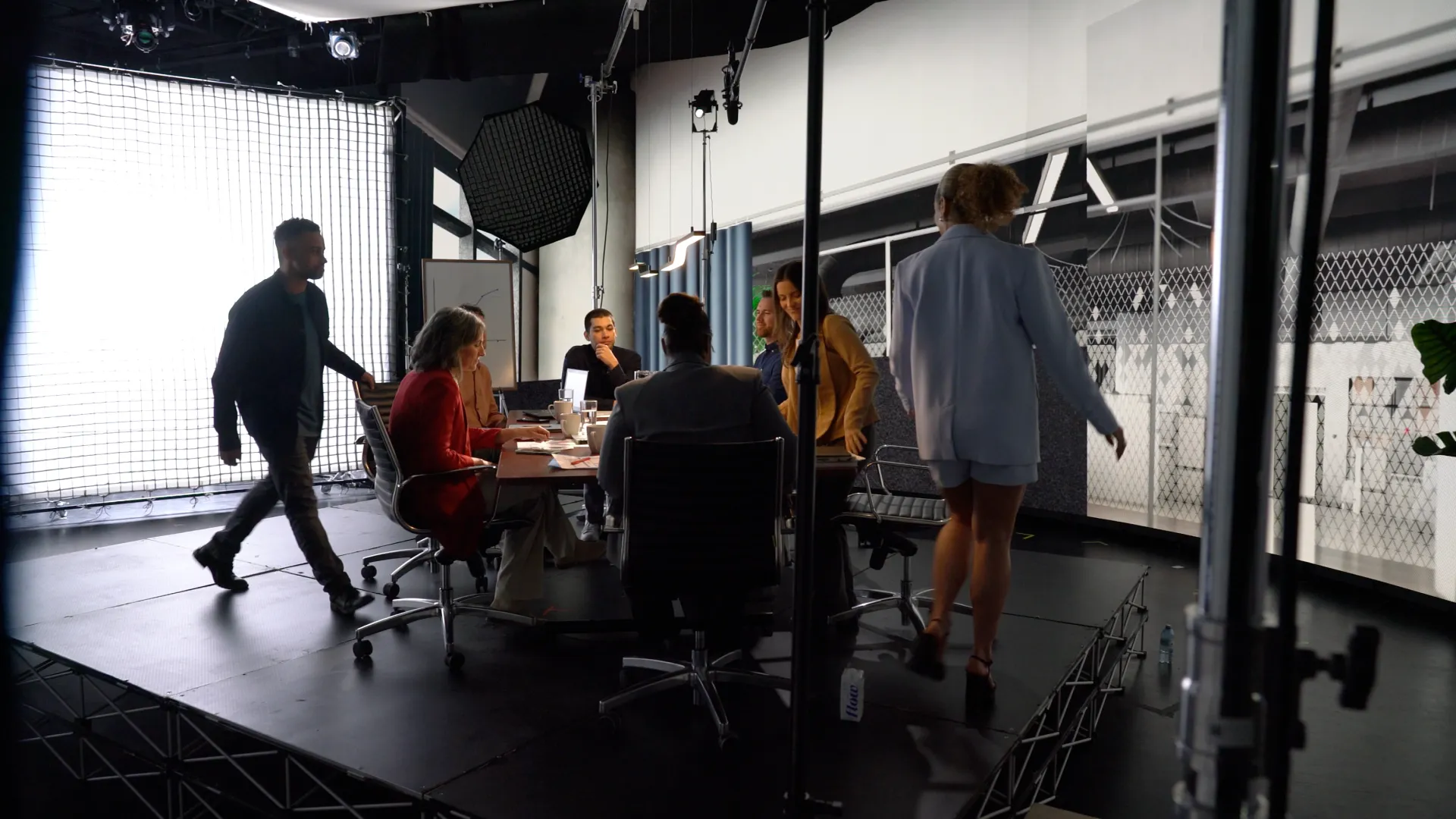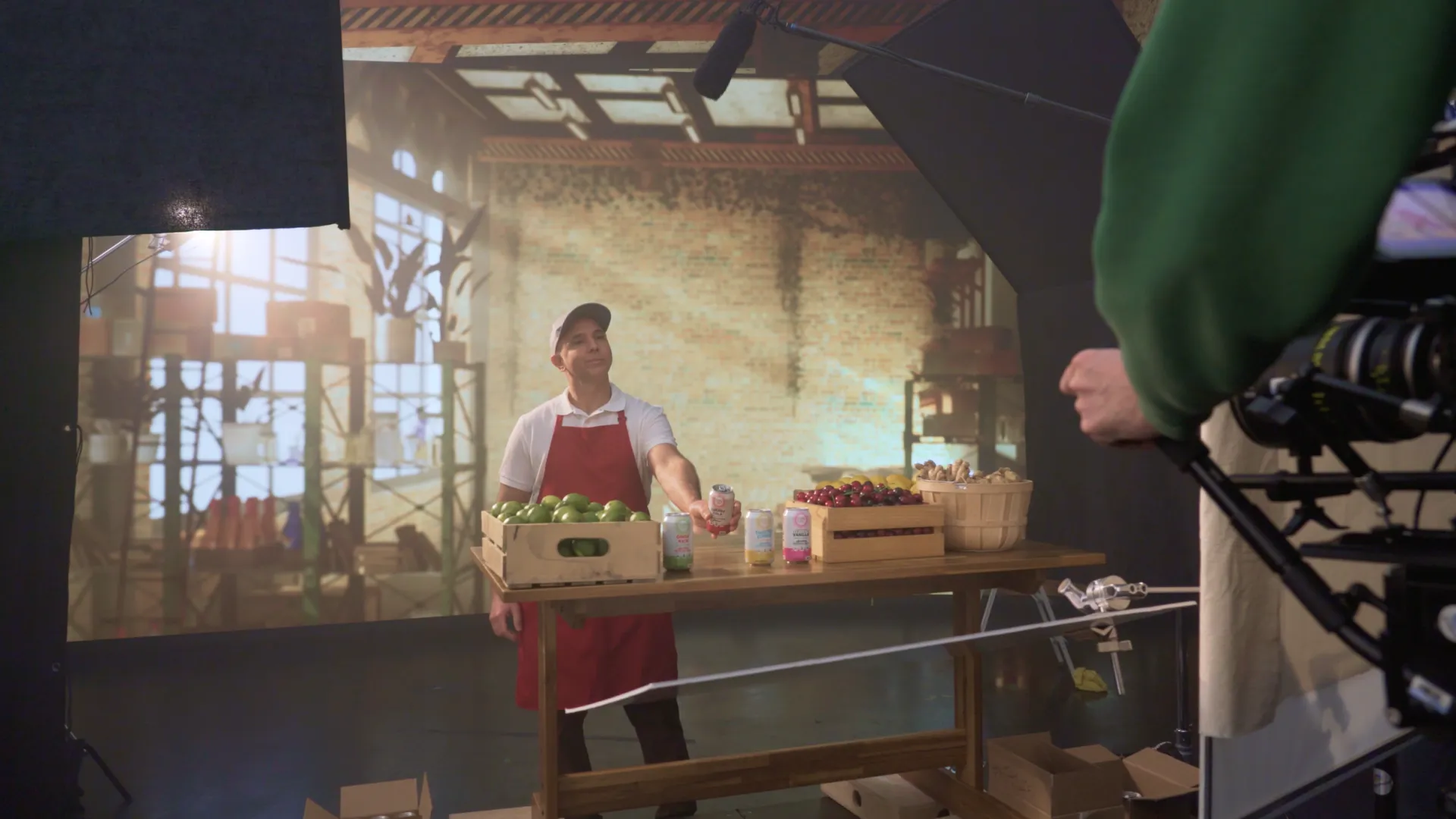
Virtual production filmmaking is a new technique that transforms filmmaking today. Directors use extended reality, real-time rendering, and LED walls. Post-production becomes shorter. Creativity grows. Green filmmaking gains support. Studios keep high quality and cut their impact at the same time.
The industry drives innovation and responsibility, too. Green film production pushes the change. Eco-friendly tools add strength. Together, they build real progress in sustainable production.
In virtual production, or VP, huge LED walls create real backgrounds. They blend digital worlds with real sets in real time. These walls provide natural light and reflections. LED walls for sustainable film production boost performance and fix issues that green screens cannot. Real-time rendering builds virtual scenes instantly. XR lets actors and filmmakers step inside digital sets. Hollywood uses VP for many projects. Major streaming platforms follow the same path:
Filmmakers use this technology to lift artistic quality. They also move toward sustainable filmmaking practices. This shift makes production more eco-conscious. Virtual production cuts the carbon footprint. It matches the industry’s growing concern over climate impact.
Traditional filmmaking carries big environmental costs. Its status is iconic, but the damage is high. Large creations burn resources. They release huge amounts of carbon dioxide. The main problems are clear. The following are significant areas of concern:
Virtual production vs traditional filmmaking shows a clear gap. This gap comes from energy use and sustainability. Traditional filmmaking depends on physical sets. It needs many location shoots. It relies on heavy post-production.
Virtual production takes another path. It blends digital worlds with real sets in real time. It cuts energy use. It reduces travel. It limits building waste. Directors get instant feedback on lighting, angles, and effects. Actors benefit too. Virtual production links cost with creativity. Studios keep cinematic quality. They also lower their environmental impact.
Studios see more than an environmental duty. Cutting these effects is a business need, too. It shapes their reputation. Small design changes already help. Travel adjustments lower the impact. Cutting energy use reduces harm. Virtual production goes further. It rebuilds the process from the ground up.
Sustainability is no longer optional in filmmaking. Governments push studios to cut emissions. They tighten rules on waste and energy. Investors follow the same line. They link funding to green practices. Audiences raise the pressure, too. They expect real responsibility. They care about the story, but not only. They want to know if creators worked ethically.
Studios now feel pressure from all sides. Audiences demand greener content. Investors want proof before funding. Regulators set strict limits. This shapes every production choice. The pressure is constant. It grows each year. Climate awareness rises. Expectations rise with it. Sustainability is now central. It is no longer an option. These forces explain why it matters in the film industry:
Even small green steps improve a studio’s reputation. They attract talent committed to ethical filmmaking. These forces push studios to test new techniques. Virtual production shows the way. It can greatly cut a movie’s environmental impact.

One strong appeal of virtual production is its promise. It cuts the environmental impact of filmmaking. Studios lower carbon emissions. They reduce waste and save energy. They rethink how they create scenes to reach this. Here’s how virtual production reduces carbon footprint:
These methods cut the footprint. Together, they create green films. By applying virtual production sustainability principles, studios make filmmaking more eco-friendly. They do it without losing creativity or quality.
Virtual production brings financial benefits. It also drives operational efficiency. At the same time, it creates visible environmental advantages. Studios cut their carbon footprint while saving money and time.
One of the biggest gains comes from faster production schedules. Directors see sequences in real time. Cinematographers see them too. They adjust shots on the spot. This flexibility avoids long editing sessions. It reduces the heavy load of post-production. It also speeds up decision-making, which keeps projects on track.
Virtual production cuts reshoots as well. Teams detect problems directly on set. They fix them right away. They do not wait until the editing stage to notice mistakes. This simple shift saves entire days of work.
Sometimes it avoids weeks of extra shooting. It removes the need to gather large crews again. It lowers costs linked to logistics and labor. With fewer location shoots, productions reduce travel. Crews spend fewer nights in hotels. Equipment transport falls, which means fewer trucks on the road. Each step adds efficiency while reducing the ecological impact.
Many industry leaders see the green benefits of virtual production in the film industry. For directors, VP is no longer a creative tool. It’s a concrete way to cut the industry’s carbon footprint. Several studies and testimonies highlight how VP supports green film production:
Real-world examples prove the point. The Mandalorian on Disney+ is often cited. The team used the “StageCraft” LED volume. They skipped long desert trips. They reused the setup for space scenes.
The Batman reached similar results. The crew built Gotham City with fewer outdoor shoots. They also cut nighttime power use. Together, these examples tell a clear story. Virtual production filmmaking is not a trend. It is real. And it is here to stay.
Virtual production brings some disadvantages. It still demands heavy infrastructure. These sustainable film production technologies also incur high expenses. This burden limits access for many companies. Indie filmmakers face the same barrier. The industry works on solutions. It pushes to make these tools easier to access.
These challenges are real, but solutions exist. Innovation and collaboration start to reduce them. Virtual production sustainability grows wider. This shift makes eco-filmmaking possible for all sizes of studios. It turns green practices into something practical and accessible.

In the future, sustainability and virtual production will merge even more. New technology points to a greener path. Industry partnerships push in the same direction. The future looks both productive and eco-friendly. The following points show how this transformation is already taking shape:
The film industry keeps its creative power. It lowers its impact at the same time. Innovation meets environmental awareness. Sustainable tools move forward. They shift from experiments to daily use.
Virtual production is a crucial first step in making net-zero films. Studios may create engaging stories. They also protect the environment by cutting down on travel. Sustainability and innovation must coexist as the sector expands.
Studios embrace virtual production sustainability. They set the standard for moral filmmaking. They also gain financial and artistic benefits. Nowadays, ethical, forward-thinking productions must use eco-friendly filmmaking technologies.